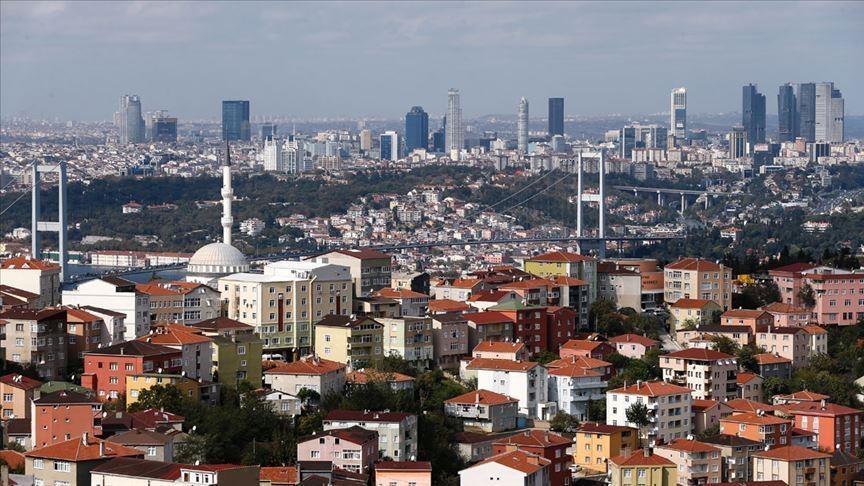
In earthquake-prone Türkiye, longstanding concerns have resurfaced and been intensified by the recent 6.2-magnitude quake off Istanbul’s coast, which prompted thousands of residents in the city to sleep outdoors for a second night amid ongoing fears of a looming disaster.
Most recently, According to Türkiye’s Disaster and Emergency Management Authority (AFAD), a 4.3-magnitude aftershock struck the Marmara Sea, centered 17.82 kilometers from Istanbul’s Büyükçekmece district, at a depth of 7.01 kilometers.
Two additional tremors, measuring 3.5 and 3.7 in magnitude, were recorded later that evening. The 3.5-magnitude quake, at 9:06 p.m., was 17.56 kilometers from Büyükçekmece and 15.23 kilometers deep, while the 3.7-magnitude tremor, at 9:07 p.m., occurred 19.88 kilometers from the district at a depth of 7.2 kilometers.
Istanbul Governor Davut Gül reassured residents via social media, stating, “The aftershocks, occasionally felt in our city, are part of the normal process following the main quake, as experts have noted. No adverse incidents have been reported to our office.
Our provincial and district disaster management centers are on duty 24/7. Let’s stay prepared, not panicked, as panic increases risks.” He added a prayer for protection from future disasters.
The 4.3-magnitude aftershock drove many residents in districts like Bahçelievler, Küçükçekmece, Sultangazi, Arnavutköy, Büyükçekmece, Esenyurt, and Beylikdüzü to evacuate homes and workplaces.
Although the major 6.2 earthquake did not result in fatalities or major structural collapses, it ignited widespread panic across the metropolis. Communication lines were overwhelmed and both highways and outbound routes from Istanbul became gridlocked in the immediate aftermath.
A cascade of aftershocks — numbering in the hundreds — further exacerbated public alarm.
In the western province of Kütahya, three tremors were recorded on April 25, the strongest measuring 4.6 in magnitude, prompting authorities to suspend education for a day.
A 3.6 quake in the Black Sea region followed these tremors.
Seismologists were quick to emphasize that there was no tectonic correlation between the seismic events in Istanbul and Kütahya.
The night of April 24 saw thousands of Istanbul residents camping in parks and public spaces. In response, authorities kept schools, mosques and sports facilities open overnight for those unwilling to return to their homes amid continued aftershocks.
Though no deaths were reported, the quake — one of the strongest Istanbul has seen in years — served as a stark reminder of the city’s vulnerability.
Urbanization Minister Murat Kurum stated that around 1.5 million buildings identified as high-risk “require urgent transformation,” emphasizing that “there is no time to lose.”
He called on municipalities to view the Istanbul earthquake, which he described as “a national security issue,” to accelerate cooperation on urban renewal.
Recent quake 'practice run' for bigger disaster
Experts have echoed this urgency, stressing that the recent tremor presents a rare opportunity to rekindle both public and institutional focus on earthquake preparedness.
"This quake should be viewed as a practice run for a much more catastrophic event," said Dr. Erdal Coşkun of Istanbul Kültür University’s Civil Engineering Department.
“We must draw lessons on structural design, implementation quality, inspection systems, soil-structure interaction and pre- and post-disaster readiness. Complacency is not an option.”
Seismologists also stressed that the absence of major damage in Istanbul should not be misinterpreted as an indication of resilient building stock.
The earthquake’s epicenter was located offshore, and Istanbul, unlike some other Turkish cities, is not directly intersected by a fault line. The North Anatolian Fault runs beneath the Marmara Sea, which mitigates the seismic intensity by the time it reaches land.
The quake lasted 13 seconds, according to geologist Professor Okan Tüysüz, who emphasized that earthquake duration typically correlates with magnitude. He warned that such a quake does not constitute a real test of the city’s building safety.
A 2019 report commissioned by the Istanbul Municipality projected that a potential 7.5-magnitude earthquake could leave nearly 50,000 buildings severely or totally damaged, with another 150,000 expected to suffer moderate damage.
Civil engineer Cemal Gökçe, who led Istanbul’s Chamber of Civil Engineers for two decades, stated that the city is “not in a better condition” today than it was at the time of the 1999 Marmara earthquake.
Amid renewed anxiety, demand for core sampling tests and real estate outside the city surged.
Meanwhile, the Trade Ministry fined businesses a total of 14.5 million Turkish Liras ($377,000) for inflating rental and sale prices in the immediate aftermath of the quake. Officials condemned the profiteering as an exploitation of public fear, imposing fines of 250,000 liras on each firm involved.